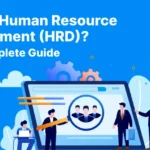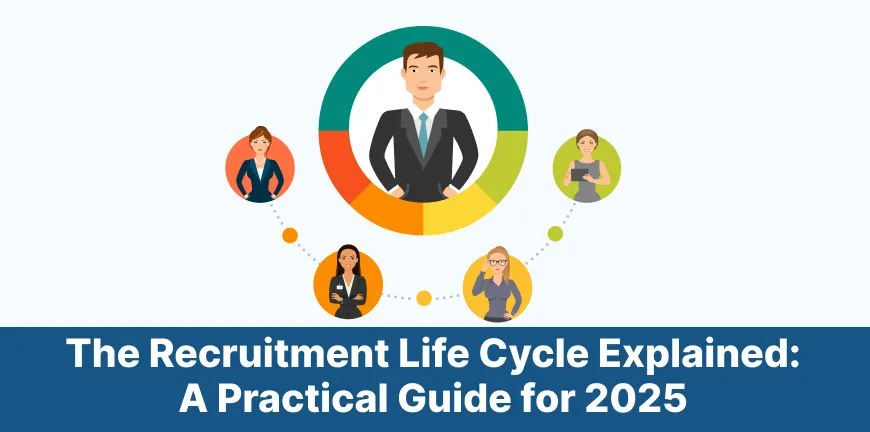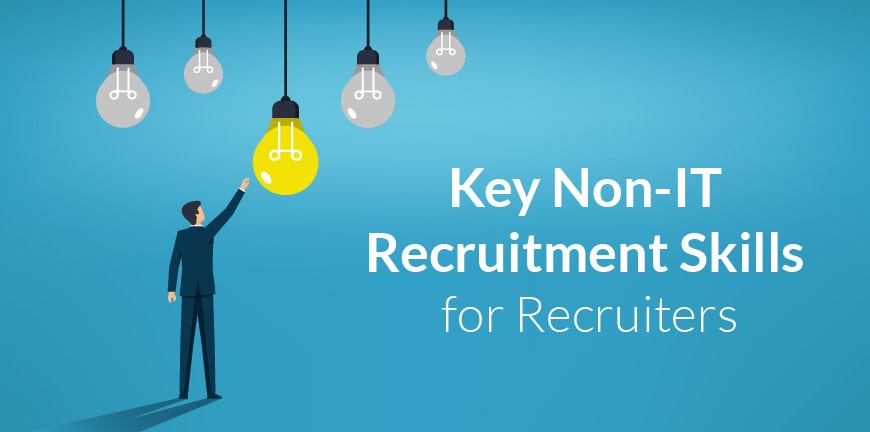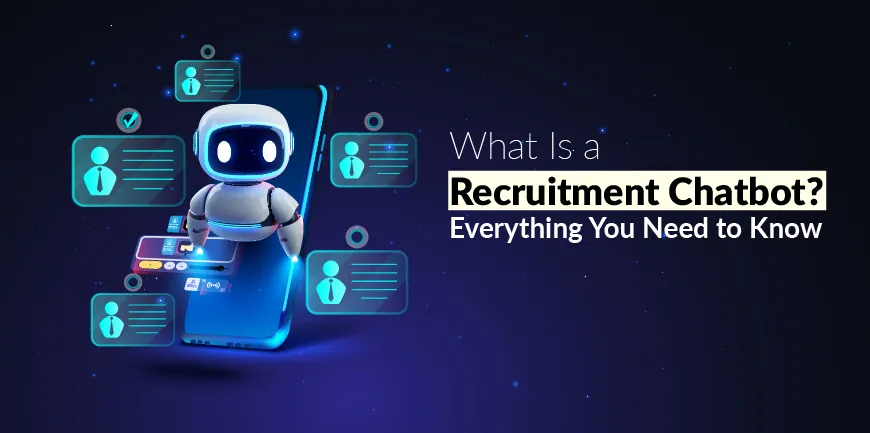
8 types of Human Resources Positions: Salaries, Skills, Career Growth
12/10/2025
What is Human Resource Development (HRD)? 2025 Complete Guide
13/10/2025- What is Full-Cycle Recruitment?
- 7 Key Stages of the Recruitment Life Cycle
- What are the Best Practices for Each Stage?
- What are the Common Mistakes to Avoid in the Recruitment Life Cycle?
- What are the Metrics and KPIs to Measure Success?
- How to Enhance Candidate Experience Across the Life Cycle?
- What is the Role of Technology and Automation in Recruitment?
- Adapting the Recruitment Life Cycle for Different Organizations
- What are the Latest Trends in the Recruitment Life Cycle?
- Building a Stronger Hiring Strategy
- Key Takeaways
- Frequently Asked Questions
As Bill Gates has said, “The competition to hire the best will increase in the years ahead. Companies that give extra flexibility to their employees will have the edge in this area.” In a transformative and fast-paced world today, it is not enough to fill vacant positions.
The perfect match must be discovered and hired by designing a seamless journey. The recruitment life cycle is the backbone of this journey, transforming potential candidates into assets.
A BCG study reveals an interesting fact: all but one of these candidates believe that quick and smooth recruiting helps separate employers from their competition. Top talent acquisition relies heavily on understanding the complete recruitment process.
Let us break down each stage of the recruitment process with proven practices to improve your hiring operations.
What is Full-Cycle Recruitment?
Full-cycle recruitment is a detailed approach where one recruiter or team handles every part of the hiring process from beginning to end. This method creates an uninterrupted experience for employers and candidates alike.
Many companies split their recruitment tasks between different teams. Full-cycle recruitment works differently – it gives complete responsibility to one person or team. The process starts when a job opens up and ends after the new hire’s onboarding.
Full-cycle recruitment has six main stages:
- Preparation and identifying hiring needs
- Sourcing candidates through job postings and networking
- Screening potential candidates
- Interviewing and selection
- Extending job offers
- Onboarding new employees
Companies use full-cycle recruitment based on their size and structure. Small companies and startups usually have one person, often an HR generalist, managing the entire recruitment process. Recent data show, it takes about 42 days to fill a position and costs nearly ₹675,043 for each new employee.
Larger companies often split these duties among specialized teams. Each team handles specific stages while keeping the whole process coordinated. This helps bigger organizations handle more hiring efficiently.
Full-cycle recruitment brings several benefits to the table. It gives better control over the entire hiring process and ensures everything stays transparent and accountable. A single point of contact creates a customized candidate experience that builds trust and encourages stronger relationships.
The approach brings together strategy, people, and technology to create an efficient hiring process. Studies show companies using structured recruiting frameworks are 40% more likely to improve their quality-of-hire compared to those using fragmented processes.
The next sections will explore each stage of the recruitment lifecycle. You will find practical guidance to implement an effective end-to-end recruitment strategy in 2025.
7 Key Stages of the Recruitment Life Cycle
A successful recruitment lifecycle depends on understanding how its stages connect with each other. Each phase builds on the previous one. This creates a well-laid-out framework that helps find and integrate the right talent into your organization.
1. Identifying Hiring Needs
The recruitment process starts when you recognize your workforce requirements. This vital first step helps assess team workload increases, identifies gaps across departments, and determines replacement needs for departing employees.. Your recruitment software can initiate the requisition process once you identify these needs.
2. Creating Job Descriptions
Job descriptions are the foundations of your recruiting efforts. A good description includes the designation, educational requirements, experience level, detailed responsibilities, work arrangement, and compensation details. Your candidate attraction improves a lot when you highlight company benefits and perks. Clear job specifications help establish reasonable accommodation controls for legal compliance and performance assessment.
3. Sourcing Candidates
The next step focuses on choosing the right channels for talent acquisition. Organizations can utilize internal sources like existing employees from other teams and external avenues such as job boards, social media, and company websites. As per data, sourced candidates are twice as efficient as applicants. The hiring ratio stands at 1 in 72 for sourced candidates compared to 1 in 152 outside applicants.
4. Screening and Shortlisting
Screening filters eliminate unsuitable candidates quickly. This phase includes resume analysis, online profile searches, phone screenings, and background verification. Shortlisting scorecards help assess candidates against predetermined criteria and reduce bias. Recruiters save up to 30% of screening time with AI-powered tools.
5. Interviewing Candidates
Standardized formats with similar questions ensure fairness and consistency during interviews. Candidates’ job-related experience and cultural fit become clear through these conversations. Multiple interviewers produce fairer results, according to research.
6. Selecting and Offering the Job
Quick action matters when extending job offers. Candidates should receive calls right after selection to minimize the risk of them accepting other offers. The offer presentation should be enthusiastic. Explain their selection reasons, confirm salary details, and showcase company benefits. Give candidates time to think over the offer before setting a response deadline.
7. Onboarding and Integration
Effective onboarding does more than handle paperwork—it strategically immerses new employees in your organization’s culture. The process begins during recruitment and continues through transition. Good onboarding helps create shorter learning curves and better satisfaction. Organizations with strong onboarding processes see 82% better new hire retention and over 70% increased efficiency.
What are the Best Practices for Each Stage?
A strategic approach based on proven practices helps you become skilled at managing each phase of the recruitment life cycle. Hiring managers must document role objectives, qualifications, salary range, and success metrics before starting the search.
Your applicant tracking system (ATS) remains the cornerstone of an efficient recruitment strategy. This technology tracks applicants throughout the recruitment life cycle and automates communications to ensure qualified candidates stay engaged.
Job descriptions with unnecessary details significantly narrow your talent pool. Research shows women don’t apply as often as their male counterparts, even with similar qualifications. The focus should stay on must-have qualifications and core responsibilities.
Here are high-impact approaches to source talent:
- Start with internal promotion opportunities before external posting
- Launch employee referral programs with creative incentives
- Align sourcing channels with your candidate profile (social media for early-career, job boards for experienced roles)
- Create talent pipelines for positions with historically high turnover
Consistent communication proves essential throughout the recruitment process, even under pressure to hire quickly. Research shows 51% of candidates leave recruitment processes because of poor communication. Simple check-ins keep candidates engaged and prevent them from accepting competitor offers.
The interview phase works best with standardization. Evaluation templates should match each role’s requirements after discussions with hiring managers. Team members who participate in interviews help assess cultural fit, as 34% of people left companies within 90 days when the culture didn’t meet expectations.
Clear timelines and accountability streamline decision-making. Each role level needs designated final decision-makers to avoid analysis paralysis that costs you great hires.
Your recruitment life cycle needs continuous measurement and refinement. Key metrics reveal patterns, show performance, and highlight problem areas. Successful full life cycle recruiting comes from learning past mistakes, conducting post-hiring interviews, and reviewing quality of hire analytics regularly.
What are the Common Mistakes to Avoid in the Recruitment Life Cycle?
Smart recruitment strategies can fall apart when companies don’t deal very well with common pitfalls. You need to know what to avoid just as much as following best practices.
Job descriptions often make companies stumble in their recruitment process. Unclear or misleading job ads push away great candidates while attracting unqualified ones. Research shows women won’t apply for positions even when they match the qualifications of their male counterparts. This shrinks your talent pool needlessly.
Poor communication derails recruitment efforts quickly. Top talent often accepts other offers because optimized hiring takes too long.
Here are the recruitment mistakes companies make repeatedly:
- Making rushed decisions under pressure (leading to rehiring costs)
- Overlooking internal candidates (missing promotion opportunities)
- Putting too much faith in resumes (about 60% have wrong information)
- Letting unconscious bias affect choices
- Looking for culture fit instead of “culture add”
Bias penetrates recruitment in many ways, including dismissing qualified candidates based on names or gender, to overlooking overqualified applicants who could excel in your company. You must look beyond candidates who just fit your current culture. Find people who bring new views and expertise.
Companies waste precious time screening unqualified candidates. This gets worse when recruiters skip reference checks or rely too heavily on interviews without testing skills.
Full-cycle recruiting needs balance. Don’t rush decisions or drag out the process unnecessarily. Good planning helps you dodge expensive mistakes that hurt both your company’s growth and candidate experience.
What are the Metrics and KPIs to Measure Success?
Success measurement in the recruitment life cycle depends on tracking specific Key Performance Indicators (KPIs). These metrics show what works well, where teams need to improve, and which areas need a closer look.
The Qualified candidates per opening metric helps teams learn how well their sourcing efforts bring in suitable talent through the recruiting funnel. This early signal reveals whether the interview funnel fills potential hires.
Days to offer measures how fast candidates move through your recruitment process from application to offer decision. This metric shapes the candidate’s experience significantly. About 38% of businesses track their recruitment KPIs monthly, while 50% do quarterly reports.
The Cost per hire metric calculates how much it costs to fill a position on average, including job ads, recruiter fees, tech tools, and other hiring expenses.
Quality of hire shows whether the recruitment team found the best candidate for a role. Teams can measure this through:
- Performance ratings
- Cultural fit assessment
- Hiring manager satisfaction surveys
The Candidate Net Promoter Score evaluates the applicant’s experience during recruitment and shows how likely candidates are to recommend your company based on their journey. Since candidate experience directly affects recruitment success, this KPI helps spot areas for improvement in your end-to-end process.
Hires to goal compares actual hires against planned targets. This metric helps determine if your recruitment efforts meet organizational needs.
Regular monitoring of these recruitment metrics helps teams spot bottlenecks, make sourcing channels better, enhance candidate experience, and show the ROI of recruitment activities.
How to Enhance Candidate Experience Across the Life Cycle?
Top talent in 2025 demands exceptional candidate experiences throughout the recruitment life cycle. Studies show that 60% of candidates drop out when applications become too complex or take too long.
Your communication needs to be tailored at every touchpoint. This approach helps candidates feel valued instead of being just another number in your system.. A customized message eases anxiety and keeps candidates engaged if they wait longer than expected for updates.
Simple applications make a big difference. You will see better completion rates by asking only what you need upfront.
Your full life cycle recruiting approach needs to be transparent. Clear hiring timelines and regular status updates matter; around 96% of candidates are more likely to apply to companies that keep them informed. Yet more than 60% of job seekers say they rarely get any response about their applications.
The interview experience shapes how candidates see your company. LinkedIn’s Global Talent Trends report shows that modern candidates want conversations where they can be themselves. You show respect by sharing interview details beforehand, including who they’ll meet and what to prepare.
Asking for feedback after interviews is a great way to get insights. About 70% of candidates want post-interview feedback, but only 8% receive it. This creates room for improvement, even with candidates who don’t get the job.
Better candidate experiences build lasting relationships beyond just getting acceptances. Each interaction showcases your company’s values and strengthens your employer brand while filling key roles through your recruitment life cycle.
What is the Role of Technology and Automation in Recruitment?
AI has transformed how organizations handle their recruitment lifecycle. Companies worldwide have embraced this change, with 55% of firms now using AI in their hiring processes. These organizations are 31% more likely to see revenue growth and 2.4 times more likely to automate their candidate screening.
Modern AI recruitment tools make the entire recruitment process smoother by:
- Cutting resume review time by up to 75% through parsing and screening
- Finding candidates across multiple platforms
- Reducing scheduling time by 36% compared to manual methods
- Managing candidate questions and updates through chatbots
- Analyzing communication skills in video interviews
Recruitment automation software goes beyond just saving time. Its valuable analytics help make better hiring decisions. Smart algorithms can now predict which candidates will thrive in specific roles or company cultures, creating perfect matches between talent and positions.
Modern recruitment technology’s foundation lies in Applicant Tracking Systems (ATS). These systems handle everything from job postings to resume databases and candidate communications. Video interviewing platforms have made talent pools global by making remote assessments possible.
More companies adopt these technologies each day. 88% of companies worldwide now use AI for their HR functions. The global artificial intelligence in HR market shows promising growth, expected to rise from INR 510.50 billion in 2024 to INR 589.82 billion in 2025.
Notwithstanding that, human judgment remains crucial in recruitment. MIT Sloan’s 2025 research shows AI works best as a complement to human decision-making rather than a replacement. Good recruitment technology makes human capabilities stronger by handling routine work. This lets recruiters focus on building relationships and strategic aspects of full lifecycle recruiting.
Companies using recruitment automation tools help their recruiters save 23 hours per week on average. This extra time improves candidate experience and leads to smarter hiring decisions throughout the recruitment process.
Adapting the Recruitment Life Cycle for Different Organizations
Companies of all types adapt their recruitment life cycle based on their specific needs, resources, and goals. Startups usually have one person who handles the whole recruitment process from needs assessment to onboarding. This full-cycle recruiter creates a customized approach for each position to give candidates a better experience.
Larger corporations work differently. They have distinct departments and job roles, where specialized HR teams or talent acquisition units handle recruitment. So their processes become more methodical and bureaucratic, with multiple interview rounds and several approvals needed. This well-laid-out approach takes longer but provides a full picture of candidates and cultural fit.
Startups and companies with years of experience show these key differences in their recruitment lifecycle:
- Structure and Focus: Startups need people who can handle multiple roles and value agility and state-of-the-art thinking. Corporations look for specialists in defined positions and value experience and specialized knowledge.
- Timelines: Startup recruitment takes 15-30 days, while traditional companies need 45-90 days.
- Technology Adoption: 90% of startups use advanced digital tools to select candidates, compared to only 65% of traditional companies.
- Skill Priorities: 75% of startups value soft skills more than traditional companies at 45%.
Each industry needs its own approach. Construction recruiters look for skilled candidates with good safety records. The hospitality sector values customer service skills through behavioral assessments. Healthcare needs people who understand medical certifications. IT recruitment focuses on technical skills and state-of-the-art thinking.
Customized recruitment solutions help match candidate skills with job requirements precisely. Companies create better recruitment strategies by studying workforce gaps, growth projections, and past hiring patterns.
Understanding your company’s unique situation helps develop recruitment approaches that attract the right talent efficiently. Job descriptions, sourcing channels, and industry-specific assessments must adapt to your organization’s reality.
What are the Latest Trends in the Recruitment Life Cycle?
The talent acquisition landscape will look quite different in the future, and the process has already begun. Organizations are adapting to new trends that will reshape their hiring approaches. The Future of Jobs Report shows expanded digital access will lead this transformation, and 60% of employers believe it will reshape their business operations by 2030.
- Companies now prefer skills-based hiring throughout their recruitment process. This method proves five times more effective at predicting job performance than traditional education-based hiring. The results speak for themselves: employees hired based on their skills tend to stay 34% longer than those hired based on traditional degrees.
- AI tools are making waves in recruitment. Teams that embrace these technologies save roughly 20% of their weekly work hours – that’s one full day.
- Workplace diversity has become essential. About 83% of employers now run diversity, equity, and inclusion programs, up from 67% in 2023. Companies with diverse management teams see their revenue increase by 19%.
- Job seekers have gone mobile, with 67% submitting applications through their phones. Evidence-based recruitment strategies prove their worth; companies report a 78% improvement in hire quality when they base decisions on data.
Building a Stronger Hiring Strategy
A well-structured recruitment lifecycle gives companies a vital edge in today’s talent-driven market.
The key stages we explored are the foundations of effective talent strategies. Each phase builds on the previous one and creates an adaptable framework that maintains consistency. Successful organizations recognize that these stages work together rather than treating them as separate tasks.
Technology constantly reshapes recruitment methods. Modern tools like AI, applicant tracking systems, and video platforms optimize processes that previously took many hours. Human judgment remains essential; the best recruitment strategies combine automation with genuine human connection.
Job seekers want clear communication, individual-specific experiences, and respect throughout their application process. Companies that ignore these needs risk losing talented candidates to competitors who prioritize positive experiences.
Metrics help organizations improve continuously. Analytical insights identify bottlenecks, optimize sourcing channels, and prove ROI to stakeholders.
Skills-based hiring, mobile optimization, and diversity initiatives will reshape the recruitment scene through 2025 and beyond. These trends show how companies’ views on talent and competitive workforce building are evolving.
Mastering the recruitment lifecycle does more than fill positions. We want to build meaningful connections between organizations and people who drive their success. Seeing recruitment as an integrated process transforms it from a basic function into a strategic advantage.
The future of recruitment holds one constant truth: organizations that refine their recruitment lifecycle will outperform those treating hiring as an afterthought. Your recruitment process creates the candidates’ first impression. Make it memorable.
Key Takeaways
Master these essential insights to transform your recruitment strategy and build a competitive hiring advantage:
- Structure drives success: Implement all seven stages of the recruitment life cycle from identifying needs to onboarding—for 40% better quality-of-hire outcomes.
- Speed matters for top talent: Complete your recruitment process within 30-45 days, as 54% of candidates abandon lengthy application processes due to poor communication.
- Technology amplifies human judgment: Use AI and ATS tools to save 23 hours per week on administrative tasks while focusing on relationship-building and strategic decisions.
- Candidate experience is your competitive edge: Provide transparent communication and personalized interactions.
- Skills-based hiring outperforms credentials: Focus on competencies over degrees for five times better job performance prediction and 34% longer employee retention.
The recruitment life cycle isn’t just about filling a position; it is about creating meaningful connections between organizations and talent. Companies that master this end-to-end process consistently outperform competitors by treating recruitment as a strategic advantage rather than a transactional necessity.
Frequently Asked Questions
1. What are the key stages in the recruitment life cycle?
The recruitment life cycle typically consists of seven main stages: identifying hiring needs, creating job descriptions, sourcing candidates, screening and shortlisting, interviewing candidates, selecting and offering the job, and onboarding and integration.
2. How long should a typical recruitment process take?
Ideally, the recruitment process should take between 30-45 days from job posting to offer acceptance. However, this timeline can vary depending on the industry and position level.
3. What role does technology play in modern recruitment?
Technology, particularly AI and automation, plays a crucial role in streamlining the recruitment process. It helps in resume reviewing, candidate sourcing, interview scheduling, and providing analytics.
4. How can organizations improve candidate experience during recruitment?
Organizations can enhance candidate experience by prioritizing personalized communication, simplifying the application process, maintaining transparency about hiring timelines, and providing feedback.
5. What are some emerging trends in recruitment for 2025?
Key trends include skills-based hiring, increased use of AI in recruitment processes, greater focus on diversity and inclusion initiatives, etc.
Contact Us For Business Enquiry

Amit Saproo
Amit Saproo is the Head of Operations at ALP Consulting with nearly 17 years of experience in Executive Search, RPO, Leadership, and IT & Engineering recruitment. He leads nationwide recruitment programs across Technology, BFSI, and R&D domains, driving strategic hiring solutions for diverse client needs. Amit excels in building and managing high-performance teams that deliver scalable, end-to-end recruitment and consulting services.




